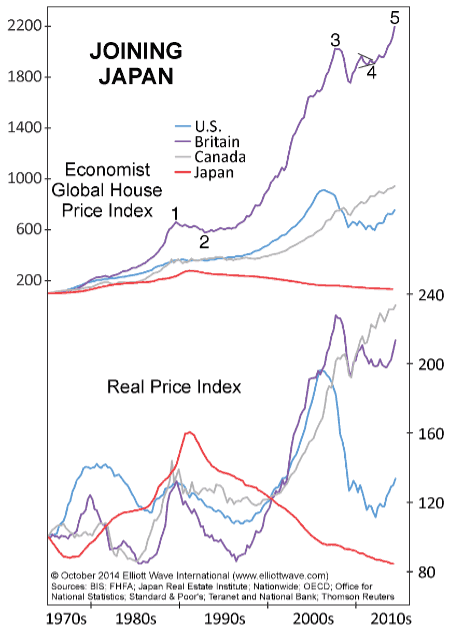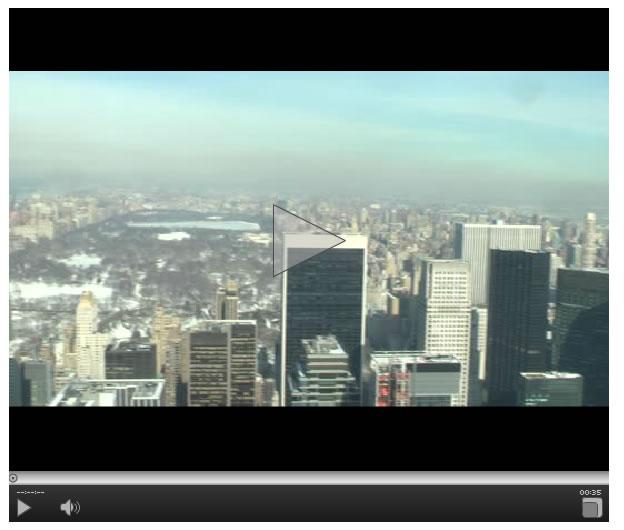Evidence of New U.S. Housing Market Real Estate Bust Starting to Appear
Housing-Market / US Housing Oct 28, 2014 - 06:09 PM GMTBy: EWI
 Editor's note: With permission, the following article was adapted from the October 2014 issue of The Elliott Wave Financial Forecast, a publication of Elliott Wave International, the world's largest market forecasting firm. You may review an extended version of the article for free here.
Editor's note: With permission, the following article was adapted from the October 2014 issue of The Elliott Wave Financial Forecast, a publication of Elliott Wave International, the world's largest market forecasting firm. You may review an extended version of the article for free here.
In February, The Elliott Wave Financial Forecast discussed the great boom in New York City's residential real estate and its keen resemblance to what happened in 1929, when the demand for luxury housing also spiked to previously unseen heights. At 133 East 80th Street, we found this plaque commemorating the earlier era's brick-and-mortar monuments to a Supercycle degree peak in social mood.

The plaque went up in 2010, demonstrating the strength of the bullish echo from the end of Supercycle wave (III) to the final after-effects of Supercycle wave (V). Another link to the prior manic era is that many of Rosario Candela-designed apartment towers from the 1920s have become "some of New York's most coveted addresses." As architectural historian Christopher Gray puts it, Candela is now Manhattan real estate brokers' "name-drop of choice. Nowadays, to own a 10-to 20-room apartment in a Candela-designed building is to accede to architectural as well as social cynosure."
Of course, the most brilliant stars in the New York skyline are those that sell for the highest prices, and that honor belongs to the brand new penthouses that the Financial Forecast talked about in February. Most are popping up along the rim of Central Park, forming a ring of cloud-topping towers that will be so pronounced it is already called Billionaires' Row.
Here is a short video that shows two of them as they were topped off in February.
The video helps illustrate our point from February: "As in the 1880s, the views and proximity to Central Park drive development, but the new buildings rise so high that the park's presence fades away."
As the Dow rallied to its September high, prices for space in these buildings also entered the stratosphere. According to Forbes, a penthouse apartment on the 89th and 90th stories of One57 (building at the end of the clip) sold for $90 to $100 million, a new record. In another building, 520 Park Avenue, owners are asking a record high $130 million for a penthouse, which will cap its top three stories. If they sell it soon -- and they will have to if they hope to land that price -- the developers should demand a big down payment. The Greatest Depression has yet to begin, but the evidence of another even more sweeping housing bust is already starting to appear. Bloomberg notes, for instance, that in the immediate vicinity of One57, three copycat buildings are "rushing" toward completion, and "some real-estate experts warn of an oversupply of luxury dwellings." Across the river in New Jersey, the story is the same: "Real estate officials are predicting the [market] is heading toward a glut" (NorthJersey.com, Sept. 21).
Meanwhile, the first whiffs of a renewed decline in single-family housing are also appearing. U.S. home prices increased at the slowest pace in 20 months in July. In the housing bellwether of Southern California, sales plunged in July and August. In fact, at less than 18,800 units sold, they were down 18.5% from a year earlier, the lowest total in four years.
The September Financial Forecast noted a similar August cratering for home sales in London, another global pacesetter. The top line on the next chart shows that the timing is about right, as British home prices have traced out a nice five waves in a rise that dates back to the early 1970s.

The lower panel on the graph shows inflation-adjusted prices in Britain and an even more pronounced rise in Canadian home prices. Now look at the red lines, which show the trend in Japan's home prices. These are the most important lines on the chart, as the Financial Forecast has long held that "Japan leads the way." Home prices in Japan have been falling steadily since the early 1990s. The chart shows that deflationary forces have come a long way but also have a long way to go. In due time, every major real estate market in the world should fall in with the downtrend in Japan.
Editor's note: For a limited-time, Elliott Wave International has unlocked an extended version of this article for non-subscribers to read completely free. Please follow the link here to read the rest of EWI's commentary about deflation spreading worldwide. Get the extended version of the article here - it's free.
About the Publisher, Elliott Wave International
Founded in 1979 by Robert R. Prechter Jr., Elliott Wave International (EWI) is the world's largest market forecasting firm. Its staff of full-time analysts provides 24-hour-a-day market analysis to institutional and private investors around the world.
© 2005-2022 http://www.MarketOracle.co.uk - The Market Oracle is a FREE Daily Financial Markets Analysis & Forecasting online publication.




